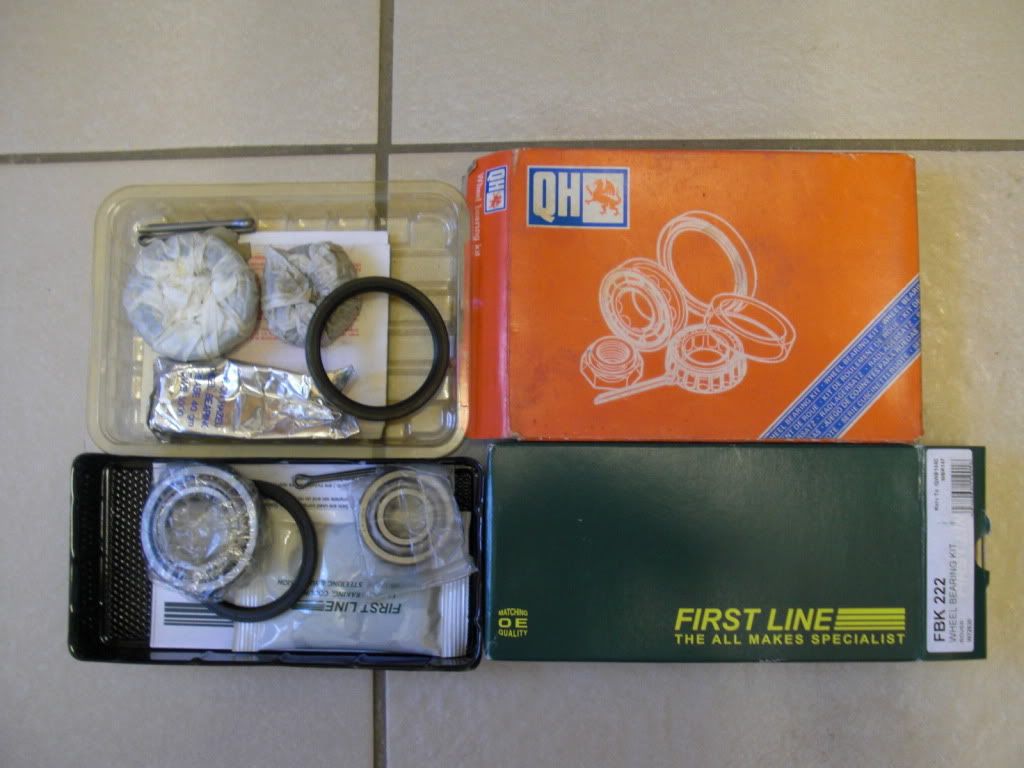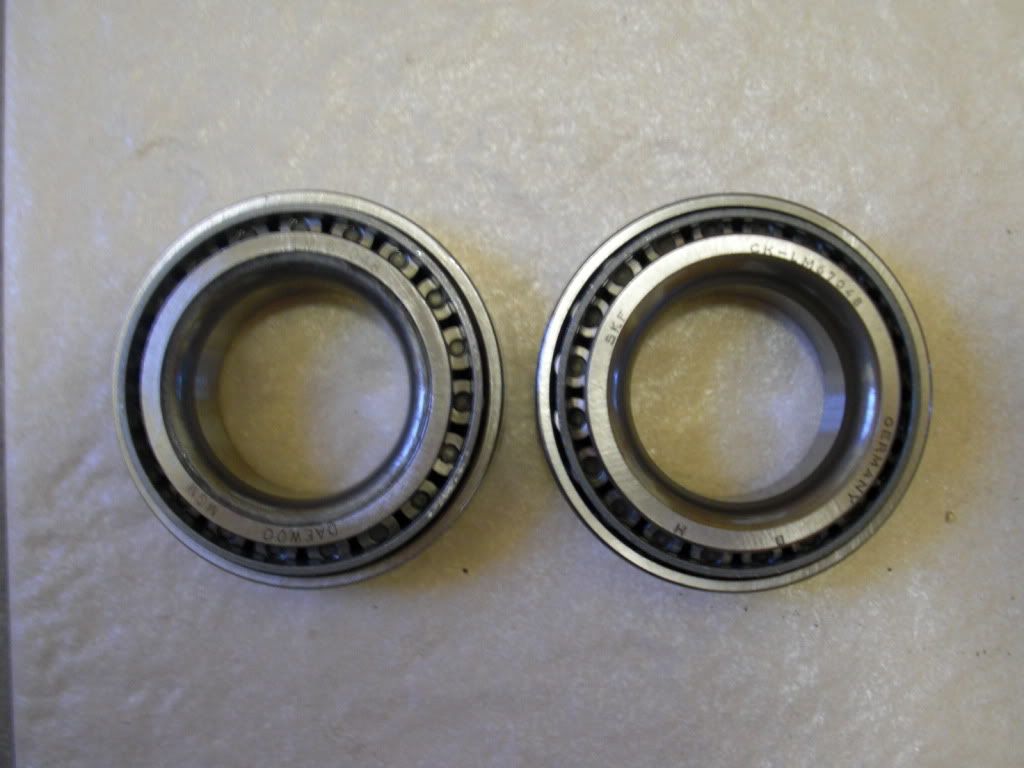Dave3066
Well-Known Member
Can anyone confirm if these wheel bearings are front or rear please:

The top set was sold as possible rears and the bottom set as fronts. I've checked my parts catalogue and it shows the rear inners and outers as being the same part number GHB140 and hence the same size. These ones have a large race and a small race so I'm thinking they're both front. The large race is 60mm (2&1/4") diameter.

Left race is from bottom set, right race is from top set.
Your assistance would be greatly appreciated
Thanks
Dave

The top set was sold as possible rears and the bottom set as fronts. I've checked my parts catalogue and it shows the rear inners and outers as being the same part number GHB140 and hence the same size. These ones have a large race and a small race so I'm thinking they're both front. The large race is 60mm (2&1/4") diameter.

Left race is from bottom set, right race is from top set.
Your assistance would be greatly appreciated
Thanks
Dave

